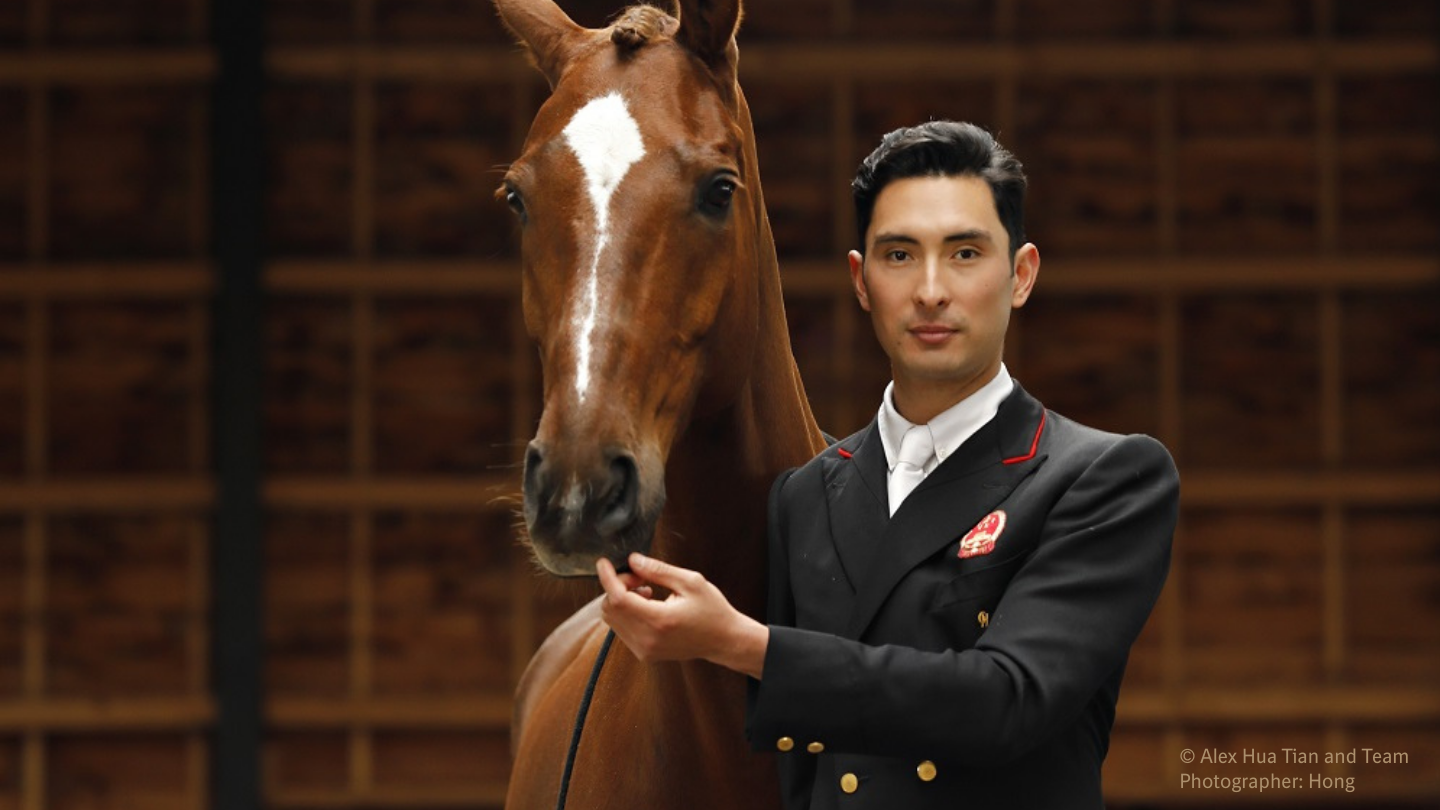China saddles up for equestrian excellence
China’s history of breeding and keeping horses is ancient. However, many around the globe are not yet aware of the rising potential for equestrian excellence in China. In this article, we’ll get you up to speed on the country’s riding craze and explain why we work with Olympian trailblazer Alex Hua Tian to educate about equine health.

How China’s equestrian sports boom started
For thousands of years, Chinese communities have bred horses. The “celestial horse” from the Han dynasty (202 BCE-220 CE) was famed in its time, and today there are many local breeds that are iconic to the major pasturing areas Inner Mongolia, Tibet, and Xinjiang. However, modern equestrianism didn’t catch on for a long time. Until the 2008 Summer Olympics in Beijing, that is!
During the games, millions of people in China watched the first ever Chinese eventing rider compete: Alex Hua Tian, who was also the youngest eventing rider in Olympic history at only 18 years of age. This marked the beginning of China’s lasting love story with modern equestrianism.
China’s eventing landscape of today
“After the Olympic games, there was a real boom: clubs and riding associations were getting established in China and parents started signing their kids up for riding lessons – and some of these kids have now turned riding into their profession,” explains our colleague Ning Zou, Equine Business Manager at Boehringer Ingelheim China, who is taking riding lessons herself. “Today, opportunities to learn the sport abound, especially in larger cities. Although, like other sports, it’s very expensive if you want to get to a first-class level.” Instead of having only one rider like in 2008, China now had six riders compete at the Summer Olympics Tokyo 2020.

Today, China has the second highest number of riders worldwide – only the U.S. is home to more horse enthusiasts. While the Chinese equine market, valued at $1.5 bn, is still small compared to the U.S. and France, for example (valued at $50 bn and $14 bn respectively), it is experiencing remarkable growth: In 2019, the growth rate was a hefty 30 percent. The country is fiercely growing its competitiveness in the field and even instituted a five-year-plan to develop its equine industry in 20201.
A need for better veterinary care for horses

However, this development wasn’t as linear as one might think. “The new riding clubs imported many high-value horses from Europe, but there just wasn’t a lot of local knowledge when it comes to horse care,” explains Ning. “Historically, horses in China were kept as working horses, not athletes. Through industrialization they have lost this function but the way they live on pastures is still relatively free. And the mindset of their owners is that if a horse falls ill, it’s part of the natural course of life.” This has led to few veterinarians specializing in equine care. With the rising demand for equine healthcare, this is now a problem for many riding clubs – and there is still a lot of work to be done in terms of awareness among horse owners and riders.
Equestrian clubs are now striving to address this issue. For example, the Shanghai Equestrian Sports Management Center recently signed a partnership with us at Boehringer Ingelheim. We will collaborate on diagnosis and treatment of diseases in competition horses, as well as related training, and more. According to Alex, efforts like these are crucial: “I hope to see more institutions, enterprises, and individuals pay attention to this area in the future."
Educating about equine healthcare with Alex Hua Tian
“Since 2008,” shares Ning, “Alex has been working with the government, with sports officials, his team and more to teach the general public the right way to treat a horse, of riding, to educate about the whole scene.” To support these efforts, we’ve now started a partnership with Alex Hua Tian. The aim? Establishing an ecosystem for knowledge sharing about equine health, human-horse interaction and stable management. In addition, we will also carry out a series of online and offline education activities aimed at enhancing the awareness among veterinarians, horse owners, horse industry professionals and the general public.
So much more than a symbol
China is undergoing an exciting transformation when it comes to how the country relates to its horses. While horses have always been prized as a cultural symbol of strength, perseverance, and youthful energy across this vast and multifaceted country, they are now starting to get the medical attention and handling they need. This will not only help riders form a closer relationship to their hoofed companions but also help Chinese equestrian athletes as they strive for excellence in their sport.
References
1 National Equine Industry Development Plan (2020-2025) issued by the Ministry of Agriculture and Rural Affairs of the People’s Republic of China and the General Administration of Sport of China
Related Content


